-
 Bitcoin
Bitcoin $84,378.2785
-0.55% -
 Ethereum
Ethereum $1,613.3823
-1.71% -
 Tether USDt
Tether USDt $0.9998
-0.01% -
 XRP
XRP $2.1166
-1.51% -
 BNB
BNB $583.4961
-0.48% -
 Solana
Solana $127.9748
-1.40% -
 USDC
USDC $0.9999
-0.01% -
 TRON
TRON $0.2501
-0.90% -
 Dogecoin
Dogecoin $0.1555
-3.12% -
 Cardano
Cardano $0.6204
-2.86% -
 UNUS SED LEO
UNUS SED LEO $9.3626
-0.31% -
 Chainlink
Chainlink $12.3627
-4.61% -
 Avalanche
Avalanche $19.5202
-4.52% -
 Stellar
Stellar $0.2383
-0.79% -
 Toncoin
Toncoin $2.9439
3.78% -
 Shiba Inu
Shiba Inu $0.0...01182
-2.54% -
 Sui
Sui $2.1212
-4.30% -
 Hedera
Hedera $0.1596
-4.40% -
 Bitcoin Cash
Bitcoin Cash $324.2513
-0.94% -
 Litecoin
Litecoin $75.2489
-2.53% -
 Polkadot
Polkadot $3.5883
-3.88% -
 Dai
Dai $1.0000
0.00% -
 Bitget Token
Bitget Token $4.3000
0.25% -
 Hyperliquid
Hyperliquid $15.3653
-2.98% -
 Ethena USDe
Ethena USDe $0.9991
0.00% -
 Pi
Pi $0.6676
-10.59% -
 Monero
Monero $215.7853
0.68% -
 Uniswap
Uniswap $5.2497
-3.13% -
 OKB
OKB $51.1095
-3.64% -
 Pepe
Pepe $0.0...07040
-4.85%
Why does DeFi mining need to rely on decentralized exchanges (DEXs)?
DeFi mining relies on DEXs for liquidity provision, token swapping, and security, enabling users to earn rewards while participating in a decentralized ecosystem.
Apr 14, 2025 at 11:42 am
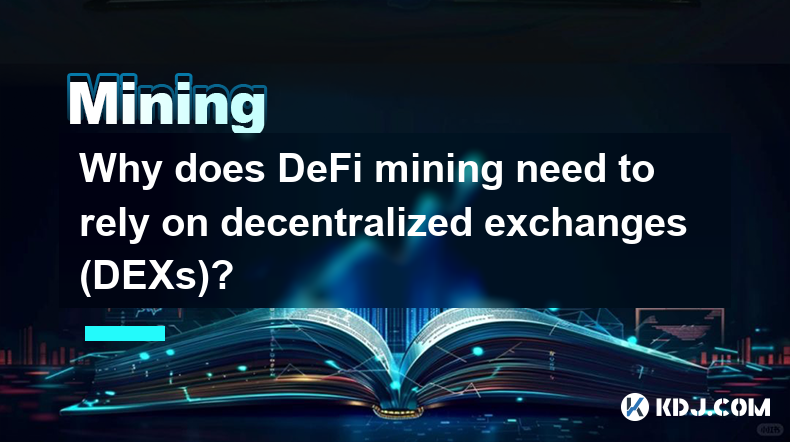
Decentralized Finance (DeFi) mining has become a cornerstone of the cryptocurrency ecosystem, offering users the opportunity to earn rewards by participating in various protocols. A critical component of this ecosystem is the reliance on decentralized exchanges (DEXs). This article explores the reasons behind this dependency, delving into the mechanics, benefits, and operational aspects of DeFi mining on DEXs.
The Role of DEXs in DeFi Mining
Decentralized exchanges (DEXs) are platforms that allow users to trade cryptocurrencies directly with one another without the need for intermediaries. In the context of DeFi mining, DEXs play a pivotal role by providing the infrastructure necessary for liquidity provision and token swapping. Liquidity pools on DEXs are essential for DeFi mining because they enable users to deposit their assets and earn rewards based on the trading volume and other factors.
Liquidity Provision and Rewards
One of the primary reasons DeFi mining relies on DEXs is the ability to provide liquidity. Liquidity providers (LPs) deposit their assets into liquidity pools on DEXs, which are then used to facilitate trades. In return, LPs receive a portion of the trading fees generated by the pool, often in the form of the platform's native token. This mechanism incentivizes users to contribute to the liquidity of the platform, ensuring that there are enough assets available for trading.
Token Swapping and Arbitrage Opportunities
DEXs also facilitate token swapping, which is crucial for DeFi mining. Users can swap one token for another directly on the platform, often at better rates than those offered by centralized exchanges. This ability to swap tokens efficiently is vital for miners who need to convert their rewards into other assets or to take advantage of arbitrage opportunities. Arbitrage involves buying a token on one platform where it is undervalued and selling it on another where it is overvalued, and DEXs provide the necessary infrastructure for such activities.
Decentralization and Security
Another significant reason for the reliance on DEXs in DeFi mining is the emphasis on decentralization and security. Unlike centralized exchanges, DEXs do not hold users' funds, reducing the risk of hacks and theft. This decentralized nature aligns with the core principles of DeFi, which aim to create a financial system that is open, transparent, and resistant to censorship. By using DEXs, DeFi miners can participate in a system that is less vulnerable to the risks associated with centralized platforms.
Operational Aspects of DeFi Mining on DEXs
To understand how DeFi mining works on DEXs, it's essential to look at the operational aspects. Here's a detailed guide on how to participate in DeFi mining using a DEX:
- Choose a DEX: Start by selecting a reputable DEX that supports DeFi mining. Popular options include Uniswap, SushiSwap, and PancakeSwap.
- Connect Your Wallet: Use a compatible wallet like MetaMask to connect to the DEX. Ensure your wallet is funded with the necessary tokens.
- Select a Liquidity Pool: Navigate to the liquidity section of the DEX and choose a pool that aligns with your investment strategy. Consider factors such as the pool's total value locked (TVL) and the tokens involved.
- Deposit Assets: Enter the amount of each token you wish to deposit into the pool. Confirm the transaction in your wallet.
- Earn Rewards: Once your assets are deposited, you will start earning rewards based on the pool's performance. These rewards are typically distributed automatically to your wallet.
- Monitor and Adjust: Regularly check the performance of your liquidity pool and adjust your strategy as needed. You can withdraw your assets at any time, but be aware of potential impermanent loss.
Impermanent Loss and Risk Management
While DeFi mining on DEXs offers attractive rewards, it also comes with risks, one of which is impermanent loss. This occurs when the price of the tokens in the liquidity pool changes compared to when they were deposited. If the price of one token rises significantly, the value of the pool may decrease, leading to a loss for the liquidity provider. To manage this risk, it's crucial to:
- Diversify: Spread your investments across multiple liquidity pools to mitigate the impact of impermanent loss.
- Monitor Market Conditions: Keep an eye on market trends and be prepared to adjust your positions accordingly.
- Understand the Tokens: Research the tokens in the pool to understand their volatility and potential for price changes.
The Importance of Yield Farming
Yield farming is another aspect of DeFi mining that relies heavily on DEXs. It involves moving assets between different DeFi protocols to maximize returns. DEXs are essential for yield farming because they provide the necessary liquidity and trading infrastructure. By participating in yield farming on DEXs, users can take advantage of various incentives and rewards offered by different protocols.
Community and Governance
Finally, DEXs play a crucial role in the governance and community aspects of DeFi mining. Many DEXs are governed by decentralized autonomous organizations (DAOs), where token holders can vote on proposals and influence the platform's direction. This community-driven approach ensures that the interests of miners and liquidity providers are considered, fostering a more inclusive and democratic ecosystem.
Frequently Asked Questions
Q: Can I participate in DeFi mining without using a DEX?
A: While it is possible to participate in some DeFi protocols without a DEX, the majority of DeFi mining opportunities rely on DEXs for liquidity provision and token swapping. Using a DEX provides access to a broader range of opportunities and enhances the overall efficiency of your mining activities.
Q: How do I choose the right DEX for DeFi mining?
A: When choosing a DEX for DeFi mining, consider factors such as the platform's reputation, the variety of liquidity pools available, the fees charged, and the user interface. It's also important to ensure that the DEX supports the tokens you are interested in and offers robust security features.
Q: What are the tax implications of DeFi mining on DEXs?
A: The tax implications of DeFi mining can vary depending on your jurisdiction. Generally, rewards earned from DeFi mining are considered taxable income. It's advisable to consult with a tax professional to understand your specific obligations and to keep detailed records of your transactions.
Q: How can I minimize the risk of impermanent loss in DeFi mining?
A: To minimize the risk of impermanent loss, diversify your investments across multiple liquidity pools, monitor market conditions closely, and choose pools with stable tokens. Additionally, consider using strategies like hedging or using platforms that offer insurance against impermanent loss.
Disclaimer:info@kdj.com
The information provided is not trading advice. kdj.com does not assume any responsibility for any investments made based on the information provided in this article. Cryptocurrencies are highly volatile and it is highly recommended that you invest with caution after thorough research!
If you believe that the content used on this website infringes your copyright, please contact us immediately (info@kdj.com) and we will delete it promptly.
- As strength returns to the cryptocurrency market, many investors are on the hunt for the best altcoin to buy now.
- 2025-04-16 03:00:18
- ZK Token Plummets 17% After Hacker Steals $5M From Airdrop Contract
- 2025-04-16 03:00:18
- An Attacker Minted 111 Million ZK Tokens Today
- 2025-04-16 03:00:17
- Kyrgyzstan Strengthens Its Position as a Regional Cryptocurrency Hub
- 2025-04-16 03:00:17
- ZKsync Confirms Exploit Targeting Unclaimed Airdrop Tokens Enabled an Unauthorized Actor to Drain Approximately $5 Million
- 2025-04-16 03:00:15
- Web3AI ($WAI) — The AI-Driven Crypto Ecosystem Everyone's Talking About
- 2025-04-16 03:00:15
Related knowledge
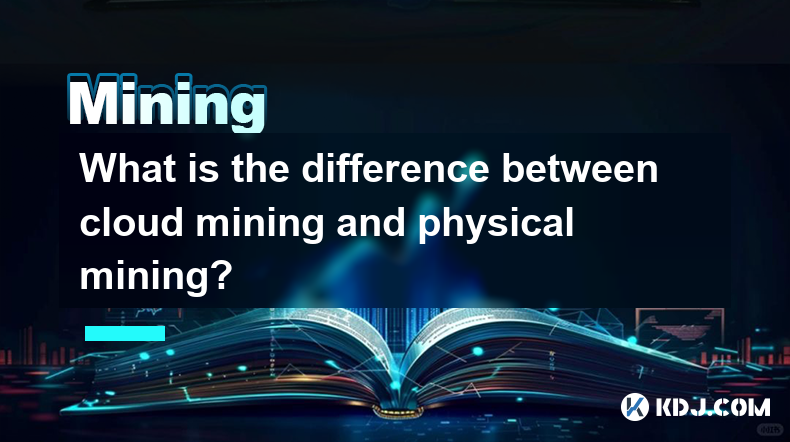
What is the difference between cloud mining and physical mining?
Apr 16,2025 at 01:49am
What is the difference between cloud mining and physical mining? In the world of cryptocurrencies, mining is the process by which new coins are generated and transactions are verified and added to the blockchain. There are two primary methods of mining: cloud mining and physical mining. Understanding the differences between these two approaches can help...
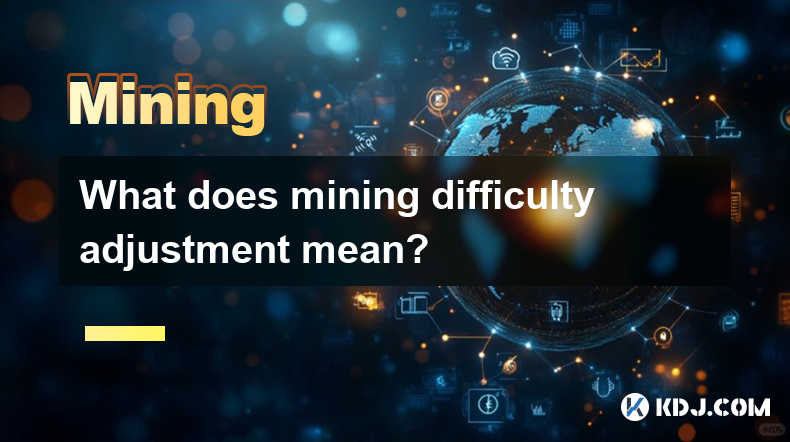
What does mining difficulty adjustment mean?
Apr 16,2025 at 12:42am
What does mining difficulty adjustment mean? Mining difficulty adjustment is a crucial mechanism in blockchain networks, particularly in Proof of Work (PoW) systems like Bitcoin. It ensures that the rate at which new blocks are added to the blockchain remains consistent, despite fluctuations in the total computational power (hash rate) of the network. T...
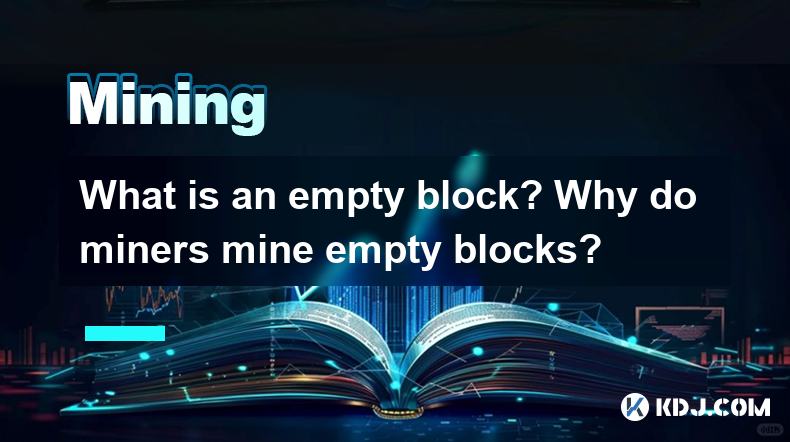
What is an empty block? Why do miners mine empty blocks?
Apr 16,2025 at 01:28am
What is an Empty Block?An empty block in the context of blockchain technology, particularly in cryptocurrencies like Bitcoin, refers to a block that contains no transactions other than the coinbase transaction. The coinbase transaction is a special transaction in which new bitcoins are generated and awarded to the miner who successfully mines the block....
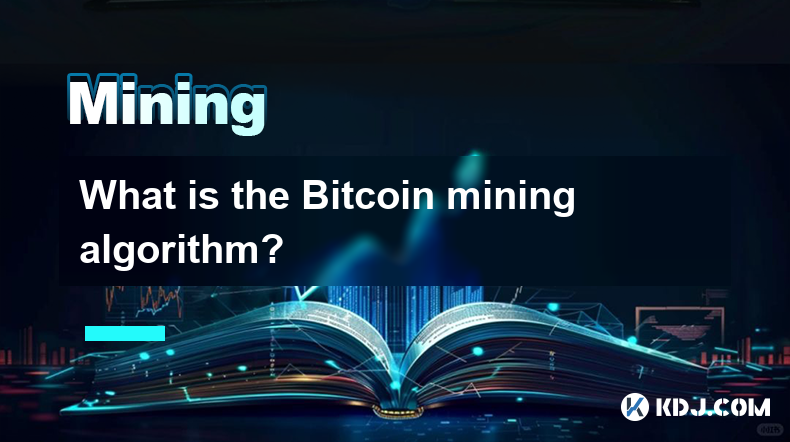
What is the Bitcoin mining algorithm?
Apr 15,2025 at 08:00pm
What is the Bitcoin Mining Algorithm? Bitcoin mining is a crucial process that maintains the integrity and security of the Bitcoin network. At the heart of this process lies the Bitcoin mining algorithm, which is responsible for verifying transactions and adding them to the blockchain. Understanding this algorithm is essential for anyone interested in t...

How to optimize the parameters of the mining software?
Apr 15,2025 at 10:43pm
Optimizing the parameters of mining software is crucial for maximizing efficiency and profitability in cryptocurrency mining. The process involves fine-tuning various settings to ensure that your mining operations run smoothly and effectively. In this article, we will explore the steps and considerations involved in optimizing the parameters of your min...
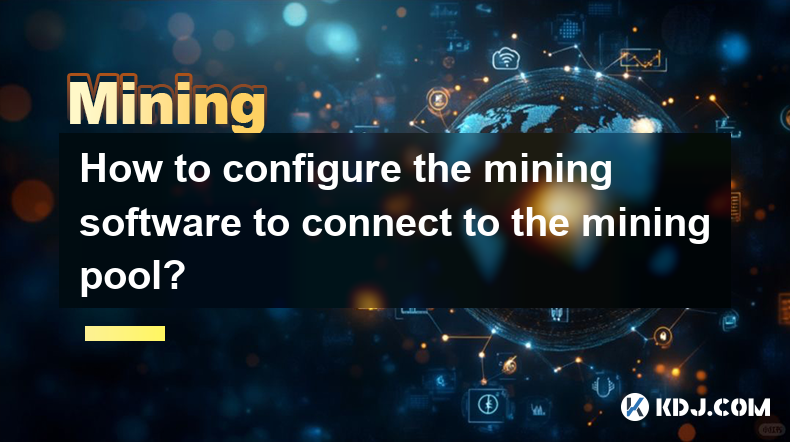
How to configure the mining software to connect to the mining pool?
Apr 16,2025 at 12:07am
Configuring mining software to connect to a mining pool is a crucial step for anyone looking to participate in cryptocurrency mining. This process involves setting up your mining software to communicate with a mining pool server, which then coordinates the mining efforts of multiple miners to increase the chances of solving cryptographic puzzles and ear...

What is the difference between cloud mining and physical mining?
Apr 16,2025 at 01:49am
What is the difference between cloud mining and physical mining? In the world of cryptocurrencies, mining is the process by which new coins are generated and transactions are verified and added to the blockchain. There are two primary methods of mining: cloud mining and physical mining. Understanding the differences between these two approaches can help...

What does mining difficulty adjustment mean?
Apr 16,2025 at 12:42am
What does mining difficulty adjustment mean? Mining difficulty adjustment is a crucial mechanism in blockchain networks, particularly in Proof of Work (PoW) systems like Bitcoin. It ensures that the rate at which new blocks are added to the blockchain remains consistent, despite fluctuations in the total computational power (hash rate) of the network. T...

What is an empty block? Why do miners mine empty blocks?
Apr 16,2025 at 01:28am
What is an Empty Block?An empty block in the context of blockchain technology, particularly in cryptocurrencies like Bitcoin, refers to a block that contains no transactions other than the coinbase transaction. The coinbase transaction is a special transaction in which new bitcoins are generated and awarded to the miner who successfully mines the block....

What is the Bitcoin mining algorithm?
Apr 15,2025 at 08:00pm
What is the Bitcoin Mining Algorithm? Bitcoin mining is a crucial process that maintains the integrity and security of the Bitcoin network. At the heart of this process lies the Bitcoin mining algorithm, which is responsible for verifying transactions and adding them to the blockchain. Understanding this algorithm is essential for anyone interested in t...

How to optimize the parameters of the mining software?
Apr 15,2025 at 10:43pm
Optimizing the parameters of mining software is crucial for maximizing efficiency and profitability in cryptocurrency mining. The process involves fine-tuning various settings to ensure that your mining operations run smoothly and effectively. In this article, we will explore the steps and considerations involved in optimizing the parameters of your min...

How to configure the mining software to connect to the mining pool?
Apr 16,2025 at 12:07am
Configuring mining software to connect to a mining pool is a crucial step for anyone looking to participate in cryptocurrency mining. This process involves setting up your mining software to communicate with a mining pool server, which then coordinates the mining efforts of multiple miners to increase the chances of solving cryptographic puzzles and ear...
See all articles























































































